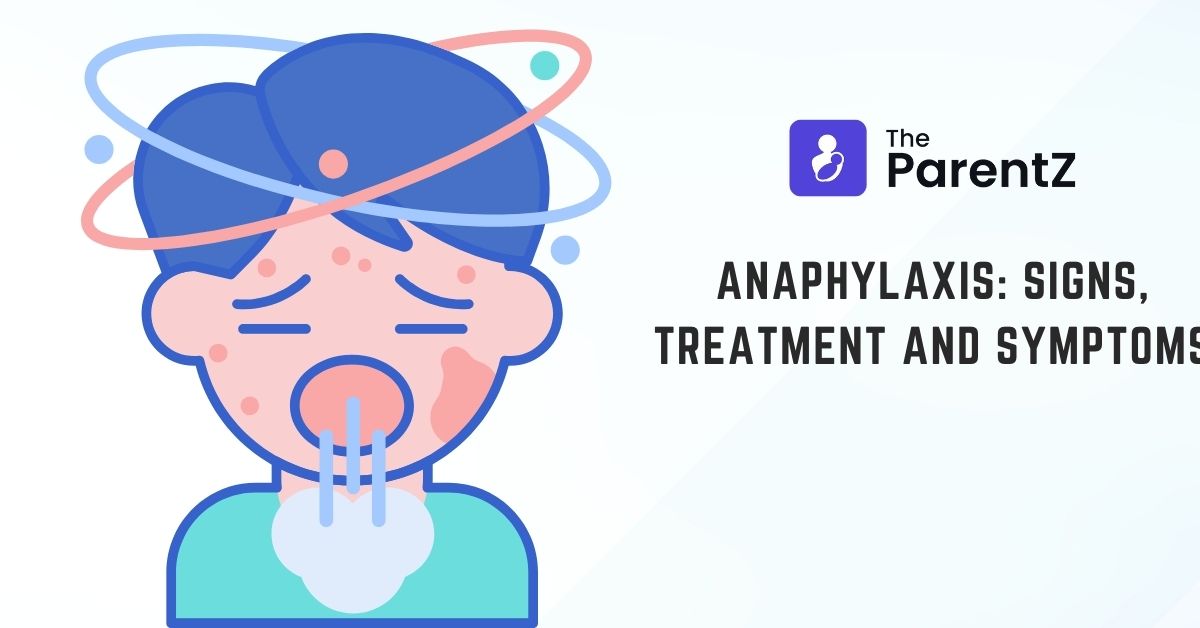What is anaphylaxis?
Anaphylaxis refers to a serious allergic reaction. These reactions can even be life threatening. In anaphylaxis, the airway of the child can swell up and become blocked. Anaphylaxis can be caused due to allergic reaction to a number of things including some food, latex, medicines or insect stings
What are the signs and symptoms of anaphylaxis?
The signs of anaphylaxis in a child can include-
- The child has trouble breathing
- The child complains of throat tightness
- The child’s voice becomes hoarse
- The child has trouble speaking
- There is wheezing or cough
- Nasal stuffiness may be present
- Symptoms related to stomach as nausea, belly pain, vomiting, diarrhea may be present
- The child has trouble swallowing and saliva starts drooling
- There may be low blood pressure
- The child complains of skin itching, redness, or swelling
- The child can start passing out
What is the treatment of anaphylaxis?
Anaphylaxis needs to be treated right away as the reaction can get worse very rapidly. Doctors usually advise epinephrine auto injectors should always be carried for children with severe problems. This auto injector gives the medicine epinephrine directly into the bloodstream which works very quickly against these serious symptoms. The injectors should always be carried by the child everywhere at school, sports, jobs, and other activities.
In case you need to use epinephrine auto injectors for your child, your doctor or healthcare provider will show you how. You should always have at least two auto injectors with your child. It ensures that a backup is present even if the first injector does not work or in case your child needs a second dose.
Antihistamines may also be prescribed for use in some cases. But these are for managing milder symptoms or to prevent flare ups of the reaction. Serious reactions should always be treated with epinephrine.
What should I do if my child has an anaphylaxis reaction?
You should act immediately if your child ever has an anaphylaxis reaction. Time is very important in case of any such emergency. You should follow these steps-
- Immediately give the epinephrine auto-injector. You should give this medicine first and then call emergency services.
- Your child should lay down with legs raised. This is to ensure the blood of the body keeps flowing towards the heart.
- You should always go to the hospital even if symptoms improve after epinephrine. The child needs to be kept under medical supervision for some hours to manage the second wave of serious symptoms if need arises.
What should I know regarding anaphylaxis?
Anaphylaxis can be scary to witness. Knowing what to do in case of a reaction and what to do which can help avoid such a reaction can help put your mind at ease.
- You should help your child to avoid allergens which can trigger a reaction.
- Ensure that you always have at least two epinephrine auto injectors with you.
- You should always inform the child’s other caregivers, teachers about the allergy. You should also make sure that they know what to do in case of an emergency.
- Periodically keep checking that the auto injectors are not expired and kept in an ambient temperature, not too hot or too cold.
- You can also make your child wear a medical ID bracelet. It contains details of the child’s allergies and how to use the epinephrine auto injectors in case of an emergency.








Be the first one to comment on this story.